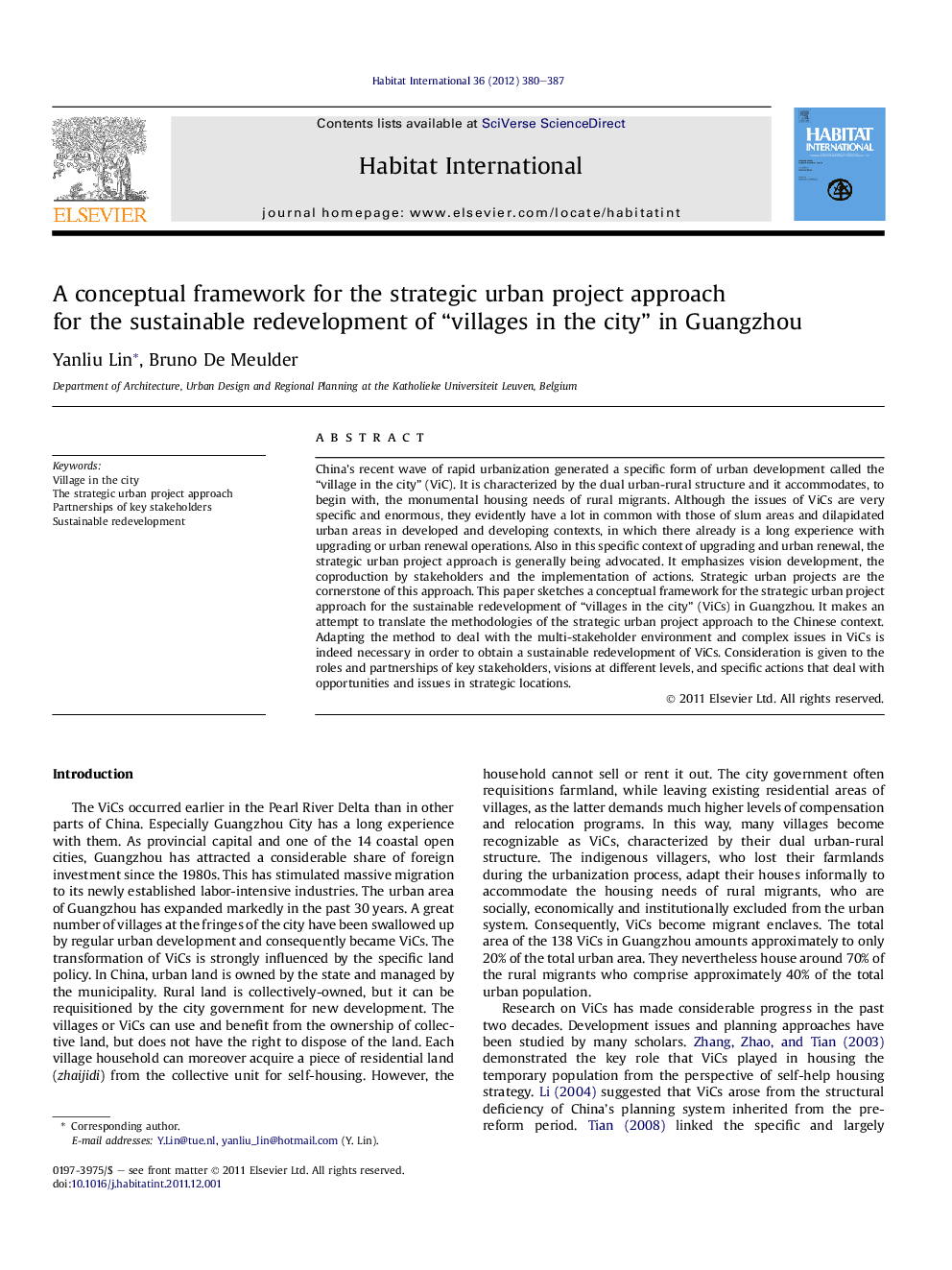| Article ID | Journal | Published Year | Pages | File Type |
|---|---|---|---|---|
| 1047990 | Habitat International | 2012 | 8 Pages |
China’s recent wave of rapid urbanization generated a specific form of urban development called the “village in the city” (ViC). It is characterized by the dual urban-rural structure and it accommodates, to begin with, the monumental housing needs of rural migrants. Although the issues of ViCs are very specific and enormous, they evidently have a lot in common with those of slum areas and dilapidated urban areas in developed and developing contexts, in which there already is a long experience with upgrading or urban renewal operations. Also in this specific context of upgrading and urban renewal, the strategic urban project approach is generally being advocated. It emphasizes vision development, the coproduction by stakeholders and the implementation of actions. Strategic urban projects are the cornerstone of this approach. This paper sketches a conceptual framework for the strategic urban project approach for the sustainable redevelopment of “villages in the city” (ViCs) in Guangzhou. It makes an attempt to translate the methodologies of the strategic urban project approach to the Chinese context. Adapting the method to deal with the multi-stakeholder environment and complex issues in ViCs is indeed necessary in order to obtain a sustainable redevelopment of ViCs. Consideration is given to the roles and partnerships of key stakeholders, visions at different levels, and specific actions that deal with opportunities and issues in strategic locations.
► A conceptual framework for the redevelopment of “villages in the city” in Guangzhou. ► Adapting the methodologies of the strategic urban project approach. ► Relationships between three key stakeholders and economic integration. ► Partnerships of key stakeholders, visions at different levels and specific actions.
